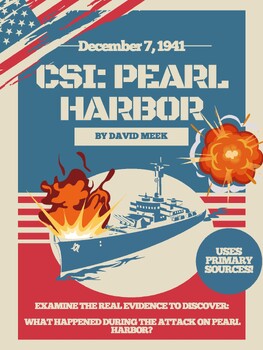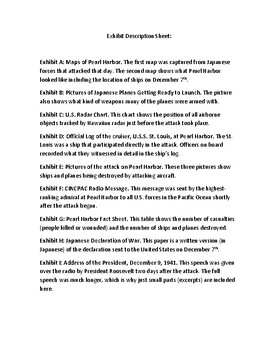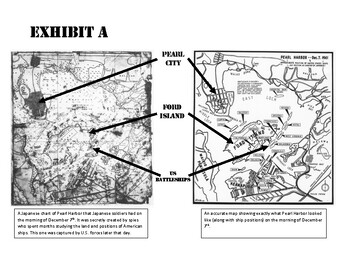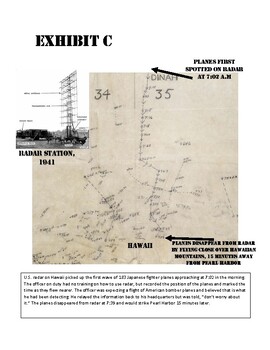History Crime Scene Investigation: CSI Pearl Harbor (World War Two)
- PDF
Description
December 7th, 1941. A day that will live in infamy.
In history there are events that define a generation. For some, that would be 9/11 or the JFK assassination. But for the Greatest Generation, it was the attack on Pearl Harbor, catapulting the United States into World War Two.
In this exciting historical investigation, your students will examine real primary sources that provide a comprehensive look at one of the most iconic events in American history.
This exciting activity can be used to challenge individual students or to encourage collaboration in groups of your choosing (I recommend no more than five in a group). Students form CSI teams and examine real evidence from Pearl Harbor to determine if American forces were actually taken by surprise, or if they knew an attack was imminent. This CSI focuses on getting the students to piece together the events that occurred that Sunday morning and make solid connections to the evidence. By the end of the investigation, students will know exactly what happened on December 7th and why the attack took place. It's a great way to encourage students to support historical arguments with relevant sources. It is also a great step in teaching students how to write well thought out answers to document based questions (DBQs) and essays.
This PDF set includes everything you need to run a 1 - 2 class period CSI investigation. (My recommendation is two class periods of 45 minutes each period)
It contains the following:
- A CSI packet with instructions that students complete as a group.
- Evidence exhibits straight from primary sources (A map of Pearl Harbor created by Japanese spies, actual logs from ships that fought during the battle, radar charts, pictures of the attack from both American and Japanese forces, a radio message, charts, and even a speech from the President of the United States).
- A Final Report with in depth questions and analysis.
This activity supports higher level thinking and encourages students to view history as a fun investigation, all while being respectful to both sides involved in this tragic, but thought-provoking event.
This PDF file is twenty pages long and contains two unique/optional pages.
- A printable color cover sheet for the investigation can be found on the second page. I print these out in color and paste them on a huge manila envelope for each group. Then I put a complete set of the evidence files in each of the envelopes for each group. It makes the activity seem more like an investigation, and makes for easy clean up by keeping all the pages together without staples.
- An 11x17 printable version of Exhibit A, which are maps of Pearl Harbor during the attack. The larger version is easier to read for students and is a fun diagram to stretch out across a desk. An 8.5x11 standard version is included for anyone who does not have access to a photo copier/printer capable of printing 11x17. All the other pages in this investigation are standard size (8.5x11) for easy printing and do not require a color printer.





